A look at seven female faculty members in the College of Basic and Applied Sciences working to make the world a better place
For students wanting to major in science, math, engineering, or technology, their prospects at MTSU have never been brighter. In addition to almost $150 million in new and renovated facilities making up MTSU’s Science Corridor of Innovation, a new generation of faculty in the College of Basic and Applied Sciences is raising the bar for STEM education — not just in the classroom, but also in the laboratory and out in the field.
The fact that so many of these young researchers happen to be women reflects the changing face of STEM — science, technology, engineering and mathematics. Thanks to their talents and influence, the STEM programs at MTSU are becoming both less and more rarified: offering learning and research opportunities to an increasingly diverse student population, while also producing more groundbreaking research that takes on our world’s greatest challenges.
The seven faculty members profiled here are just a few of those new faces. Under their mentorship, Blue Raiders are helping address the rising cost of health care, the toxic byproducts of industry and energy, the environmental effects of climate change, cruel diseases like cancer, and even inadequacies in STEM education.
While their research subjects vary, these women share a common sense of altruism that shines through in their work as researchers and teachers. Ultimately, their goal is to make the world a better place.
The Change Agent
Medicine has saved countless lives, but manufacturing it can have serious side effects. Pharmaceutical processes often involve catalysts made from precious metals like ruthenium or iridium, whose byproducts are toxic and expensive to remove. Keying Ding, an assistant professor of chemistry, hopes to make these processes safer and cheaper. Supported by National Science Foundation grants, she is developing a new family of catalysts using cobalt, an earth-abundant metal, for organic synthesis with water and hydrogen as the only byproducts, which are environmentally benign.
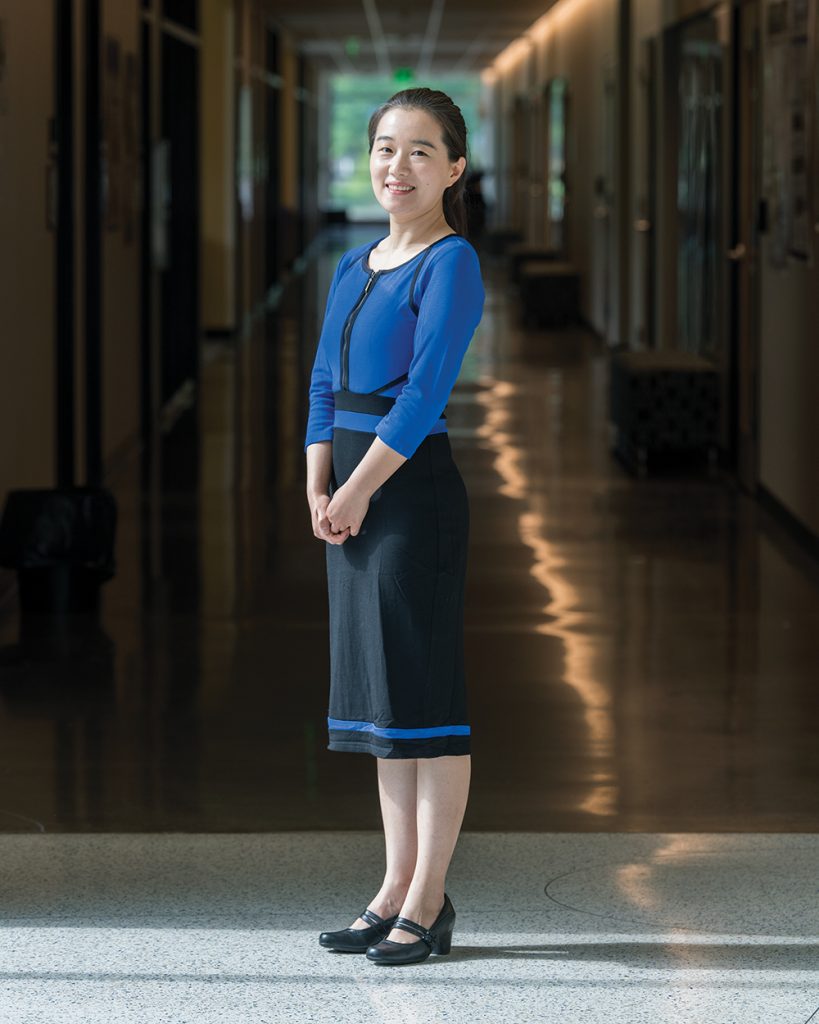
Ding’s focus is “green chemistry,” and catalysis is integral to her research. Because they accelerate chemical reactions without being consumed themselves, catalysts are critical to many industrial processes. Cleaner alternatives could have applications in the pharmaceutical industry and beyond.
“Currently, some chemical and pharmaceutical processes are not selective and energy-effective, and often they generate a lot of hazardous wastes,” Ding says. “We hope to develop new catalysts for a number of organic transformations using sustainable methods.”
Ding’s cobalt-based catalysts also could make it easier to use hydrogen as a green energy source, she says. While hydrogen is clean and abundant, it’s also a gas, which is hard to transport. She hopes to develop a more portable option: a liquid carrier that would release hydrogen gas upon introduction of the catalyst.
“Currently, we also are developing catalysts on other base metals such as iron and manganese, which are even more appealing,” she says.
Ding has made chemistry itself more appealing in her five years at MTSU. She has mentored numerous graduate and undergraduate students and recruited them to work in her state-of-the-art lab, which she has enhanced through NSF grants. She’s also tapping the potential of low-income and first-generation students, a population often underrepresented in STEM fields. In collaboration with colleague Andrienne Friedli, Ding launched a pilot program to encourage these students’ engagement and success, supported by the Tennessee Board of Regents. And for the past two summers, she has extended her outreach to economically disadvantaged high school students in Rutherford County, organizing summer educational programs funded by the American Chemical Society Project SEED.
“Education studies have shown that this mentor-student relationship and lab research can really increase the retention rate, as it offers hands-on experience to deepen students’ understanding of chemistry concepts and helps them feel more confident working in STEM fields,” she says.
As an ambassador for the Department of Chemistry, Ding has become something of a catalyst herself.
Outstanding in Her Field
When Racha El Kadiri says she’s going on a field trip, she means it. An assistant professor in the Department of Geosciences, she has explored fields (and creeks and riverbanks) in the United States and abroad to witness the impact of droughts, floods, and other water-related natural hazards. The outdoors often serves as her lab and her classroom.
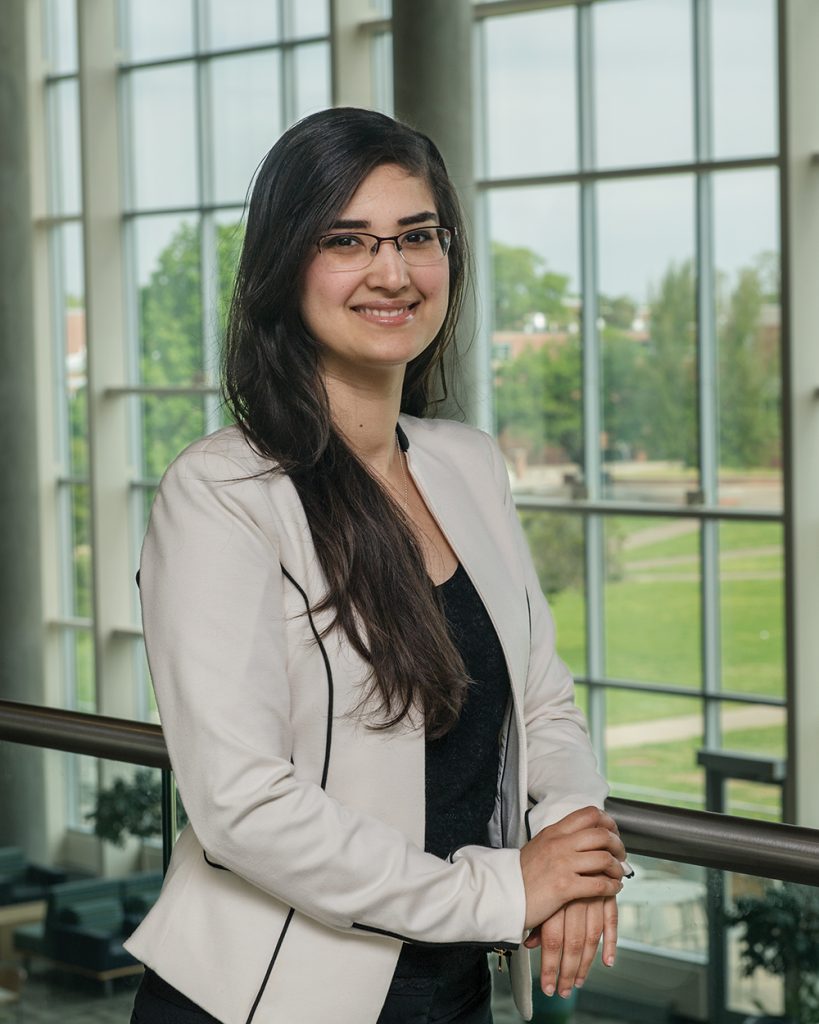
“Field trips are part of my research but also part of my classes,” she says. “We’ll go and camp, for instance, in the Smoky Mountains for three days, collecting water samples, taking some stream morphology measurements, and just hiking and making observations about the water cycle.”
But when El Kadiri needs to understand the big picture, she works in her computer lab. Using satellite data, machine learning, geographical information, and other technologies, she sees how landslides, erosion, and similar events are shifting regional landscapes over time. Then she uses modeling to predict when and where such events might happen in the future, especially as climate change makes the weather more extreme.
“There is a scientific consensus on global temperature increase, but we don’t know exactly how the increasing temperatures are going to affect different aspects of life,” El Kadiri says. “How is climate change going to affect, for instance, natural hazards, transportation or agriculture?”
Currently, she and her departmental colleague, Henrique Momm, are collaborating with scientists from other universities to project how warming temperatures will impact farming in the Lower Mississippi River Basin. “We are trying to estimate what we should expect in the next hundred years, using climate change scenarios ranging from the least to the most optimistic,” she says.
Although the basin is one of the nation’s biggest producers of biofuel crops, it is understudied relative to other farming areas, like the Midwest, she says. This current project is being funded by the U.S. Department of Agriculture.
After completing a pilot study of the Sunflower watershed, El Kadiri and the research team will present their preliminary findings in a workshop for farmers, graduate students, and other stakeholders in the community. Ultimately, they will expand their study to the entire Lower Mississippi River Basin, she says.
As global temperatures rise, the weather is getting less predictable. But, by helping predict the long-term consequences of climate change, scientists like El Kadiri are giving farmers a better opportunity to prepare for weather events.
The Model Teacher
The exorbitant cost of American health care is a problem that has confounded political attempts to solve it. Misa Faezipour, an assistant professor of engineering technology, is tackling the problem from a mathematical angle. The numbers she evaluates don’t represent dollars and cents, but rather the many interrelated factors that determine the quality of the hospital/patient experience. If she can reduce the cost of some factors while maintaining patient satisfaction, she says, the savings will benefit providers and patients alike.
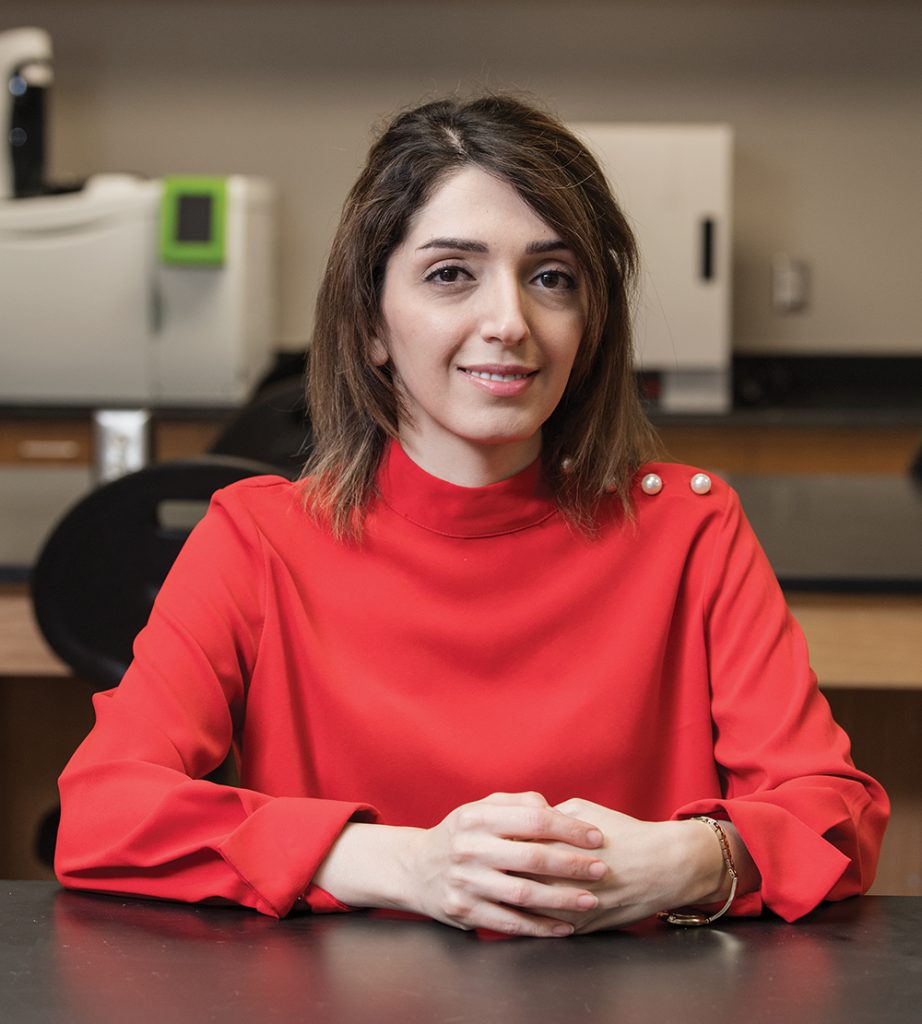
Some of those factors, like the number of trained staff at a particular hospital, are obviously quantifiable. Others, like effectiveness of the service there, are not. Constructing a mathematical framework based on these diverse factors seems like an impossible task.
But, as an expert in system dynamics, Faezipour does just that. Right now she’s working with Saint Thomas Rutherford Hospital to create a causal model of those interrelated factors, underlain by complex mathematical equations that can predict how changing factors would affect patient satisfaction. At Saint Thomas, the model will be tried, validated, tweaked, and then validated again, until an optimal model is found for guiding hospital policy.
System dynamics is a way to quantify the unquantifiable — and it doesn’t just apply to health care. This form of engineering has endless applications, Faezipour says.
“You could choose any process or problem or organization and apply the methods and the modeling to that system.”
That’s the beauty of system dynamics. It can be a gateway to engineering for students who had never considered it.
Faezipour recalls one of her students, a double major in Biology and Japanese, who had studied abroad and was keenly interested in international relations. She wanted to switch to engineering but was worried that her academic experience wouldn’t apply. Faezipour reassured her that her background and interests would serve her well — that she could use system dynamics to model the cultural differences between two countries and predict how they might respond to the same problem.
“I think those of us in engineering should try to help students like this, so they won’t think that it’s really hard, and they don’t want to come near it,” Faezipour says.
By being quick to encourage, teachers like Faezipour are attracting new students to engineering — students who might someday take their own STEM approach to fixing our broken health care system. Who knows? That might be just what the doctor ordered.
The Learning Lab
In the movies, the college lecture is often a punch line: droning professor versus dozing students. In the real world, great teaching can happen from behind a podium. Still, most educators would agree that a large lecture hall isn’t always the best forum for learning, especially in the sciences.
Anna Grinath, an assistant professor of biology, wants to change the dynamics of how that subject is taught in higher education. Unlike most of her departmental peers, she studies a human-constructed ecosystem, the college classroom, in order to understand how certain variables help or hinder student learning. Based on that research, she’s developing new learning experiences that can be used in any undergraduate biology classroom — although first she’ll test them in her own.
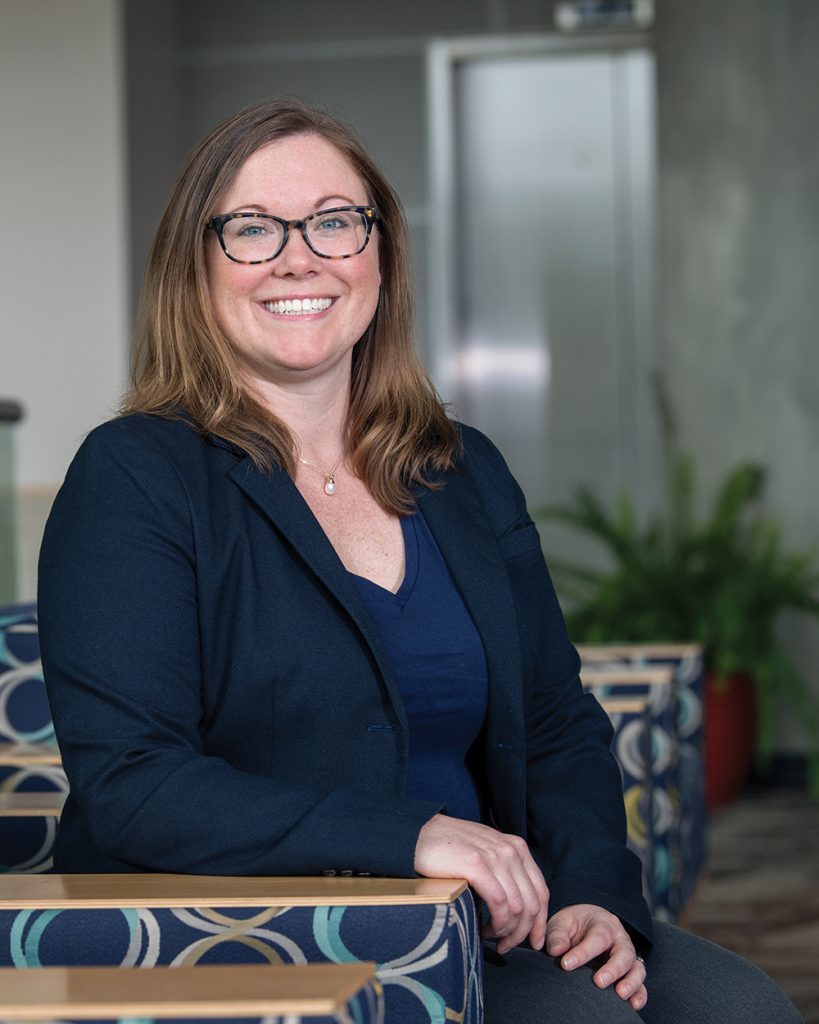
Since Grinath can’t scale down the size of her large lecture classes, she’s scaling up the methods of Ambitious Science Teaching, a learn-by-doing pedagogy that was originally designed for smaller K–12 settings.
With her Ambitious approach, students in college biology lectures wouldn’t just sit and listen (or sleep or text). Instead, they would be expected to engage with the instructor and each other —asking questions, posing answers, and suggesting ways to test those answers. And, instead of merely following a set of instructions, students in biology labs would work together to design and execute their own experiments and analyze the resulting data.
It’s all about allowing students to shape their own learning experience, Grinath says. “The classroom environment should create opportunities for students to have a voice in the classroom and to engage in the discursive interactions that scientists engage in.”
This fall, working with a colleague in the Department of Education, Grinath will run an Ambitious-style pilot program in a section or two of freshman-level biology at MTSU. So, rather than telling 80 students how to measure the natural variations in a biological population, as she would have last year, she’ll let them do it themselves, using 3D models of sea sponges printed at the Makerspace in Walker Library.
“We don’t want a disconnect between what it looks and feels like to do science, and what it looks and feels like to learn about science,” Grinath explains.
In other words, students understand biology best when they are encouraged to act like biologists.
An Absolute Puzzle
From the earliest age, Rachel Leander loved biology. Then she got to college and discovered that she loved math, especially writing proofs, even more. “There’s this absoluteness to it,” she says. “And when it’s time to prove something, it’s like solving a puzzle — it’s just fun.”
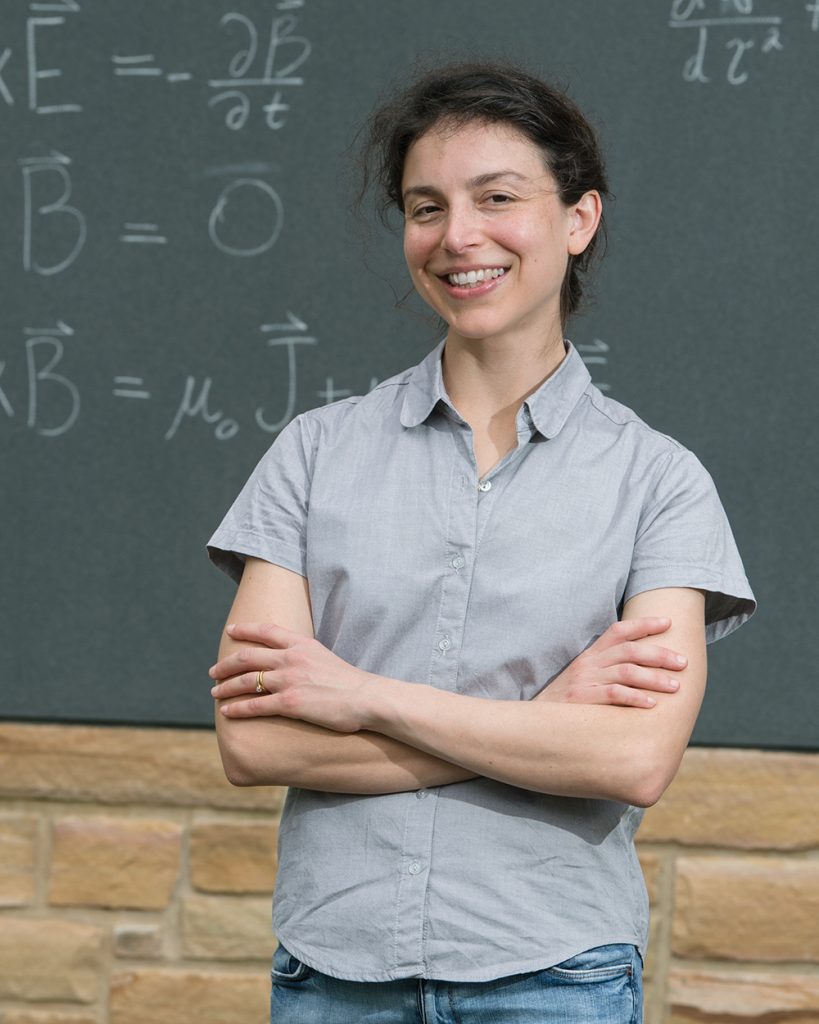
As an assistant professor of mathematics, Leander enjoys the best of both worlds. She’s using equations to try to solve one of the most fundamental puzzles in biology: why, all else being equal, some cells choose to die while identical ones divide.
Understanding cells’ random decision-making has profound implications in the world of medical science. Although Leander works at a theoretical level, what she learns about cell death and division — and the interdependence between the two processes — could ultimately help inform cancer research. “You can imagine, for example, that if we have a better characterization of how variable cell-cycle division times are, then we can get a better idea of how effective drug treatments are,” Leander says.
But the scientific method doesn’t offer a way to model and test the complex, interrelated biochemical networks inside a cell that determine whether a cell will divide or die. That’s where math can help, she says.
“What we do as mathematicians is make these hypotheses really precise and, in a sense, quantitative,” Leander says. “That makes it possible to derive predictions that you couldn’t make otherwise.”
Her research is open-ended; every answer leads to another question. And that’s half the fun, Leander says, since every new question means another puzzle to solve. But she gets a different kind of enjoyment — instant gratification — from teaching, particularly undergraduate courses. She considers it a personal challenge to kindle enthusiasm for math in a student who hadn’t expected to enjoy it.
“There are definitely ‘Aha!’ moments in science, but those are few and far between as opposed to just asking questions and taking baby steps,” Leander says. “What I like about teaching is that I feel like I can make a little difference in people’s lives every single day.”
A Natural Ambassador
Forget the euphemism: For Mina Mohebbi, the call of nature is a powerful urge to protect the environment. It’s what compelled her to volunteer for river cleanups as a graduate student in Iran and to switch her master’s focus from civil to environmental engineering. Mohebbi earned her bachelor’s in civil engineering, but her research interest always seemed to stray from traditional infrastructure — roads, bridges and dams — to the broader infrastructure of industry and its impact on air, land, and water.
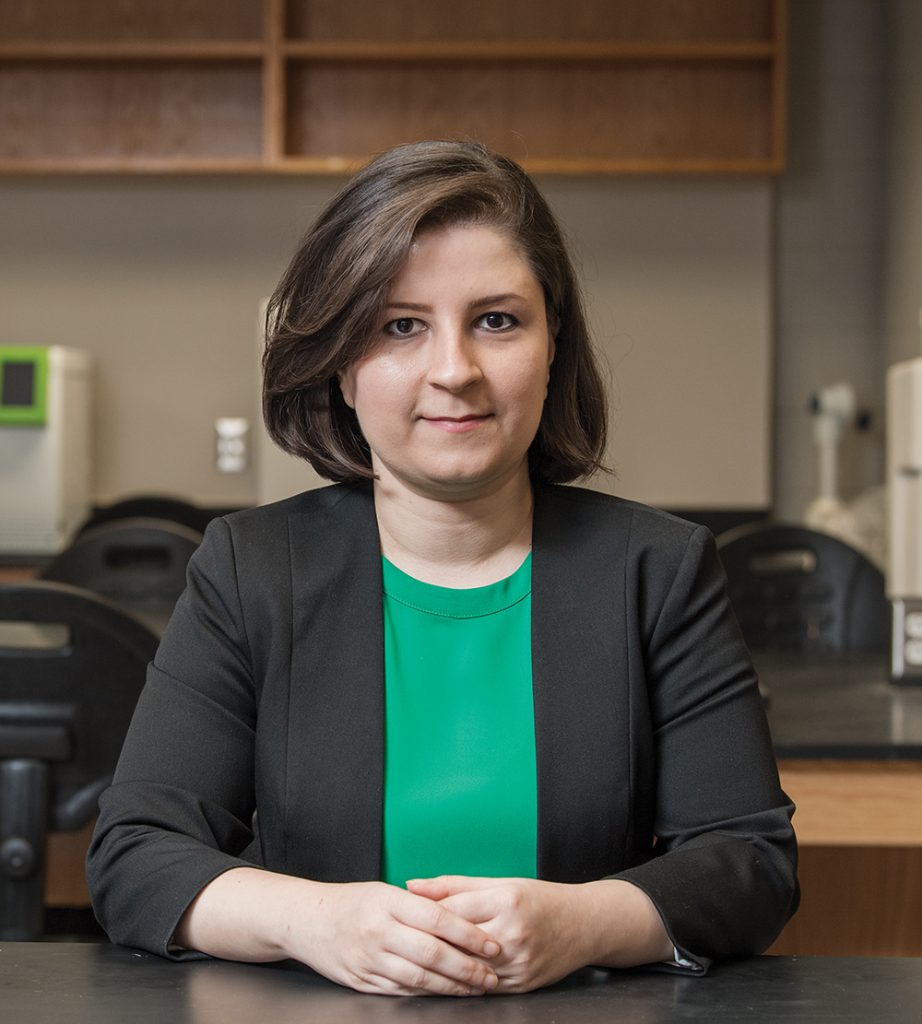
“It was a good feeling when I found that I can be involved in saving the environment for the next generation, helping people enjoy it now but also preserving it for other people to enjoy,” she says. “That was a big motivation for me.”
Mohebbi says she hopes to continue the environmental research she started as a doctoral student at Penn State University, where she collaborated with a local power company that was exploring new ways to recycle some of the toxic waste that coal-fired power plants generate by the ton. Coal byproducts like fly ash and gypsum are already being reused in innovative applications, such as concrete construction and soil stabilization, Mohebbi says. In this case, she was assessing the potential benefits and environmental impacts of depositing ash in a dead mine near the power plant.
Now that she’s in her second year as an assistant professor of engineering technology at MTSU, she’s looking for similar opportunities to collaborate with industries in middle Tennessee. “There are a variety of industrial byproducts that can be beneficially reused, and I think all of them are worth evaluating,” Mohebbi says.
She’s also tackling environmental issues even closer to home. As landfill space is increasingly scarce, Mohebbi plans to launch a composting program on campus, and she’s been talking with the Murfreesboro Solid Waste Management Department about enhancing the recycling programs at MTSU and area schools.
Much of that work is contingent on her winning a grant from the Environmental Protection Agency, historically a major funder of environmental programs and studies. As the agency’s profile has diminished, Mohebbi notes, so has its investment in research like hers.
“There are still some opportunities — the EPA had some plans for clean power plants . . . and that was a really good idea — but unfortunately it’s not on the table anymore, and opportunities for us as faculty and researchers have shrunk,” she says.
Mohebbi says she hopes the environment will regain its place as a national priority. For now, she’s placed her hope in children. If we can get them in the habit of thinking and acting sustainably, she says, they could be nature’s greatest ambassadors.
Charged with Changing Lives
To most people, quantum mechanics might as well be rocket science — just another way to say unfathomable. Hanna Terletska was lucky. In her native Ukraine, she had a physics professor whose enthusiasm for the subject was contagious. “He was crazily in love with it,” she recalls with a laugh. “He would go up to the board and say, ‘This is so beautiful!’ And at some point I thought, ‘Okay, maybe this is beautiful. Let’s look at this.’”

Terletska, an assistant professor of physics, admits that quantum mechanics can be counterintuitive, as it characterizes matter in terms of waves and particles. “When you can’t see it or touch it, it’s kind of hard to imagine,” she says.
Understanding how natural objects behave at the atomic and subatomic levels is key to her research, which involves studying the potential of certain materials to transmit or store energy. Both fossil-fueled and nuclear energy come with well-known hazards, so finding safer, cleaner ways to power our world is critical work.
Both fossil-fueled and nuclear energy come with well-known hazards, so finding safer, cleaner ways to power our world is critical work.
It didn’t take long for Terletska’s research on the subject to grab national attention. Last year, her first at MTSU, she was one of eight winners of the prestigious Scholar Award from the Kavli Institute for Theoretical Physics. Given to faculty at teaching-intensive U.S. colleges, the three-year award allows recipients paid opportunities to travel and focus on their research, which can be hard to balance with classroom responsibilities.
But, to Terletska, her students are as important as her research. She’s worked especially hard to encourage and mentor female physics majors — a group that’s underrepresented in the United States, she says. As the mother of a preschooler, Terletska knows from experience that women often face unique challenges in predominantly male fields, especially if they are juggling family obligations too. “I need to show female students that this is possible, that they can do this, that it’s fun and interesting,” she says.
Terletska beams when she mentions that three of her undergraduate students, including two women, have been accepted into graduate school. “This is the best part of my work, when you can change somebody’s life,” she says.
Like her former professor, Terletska has a contagious enthusiasm for her subject — and in her case, the effects are apparent not just in her students, but also in her 4-year old son. She says she’s been contemplating Andrew’s future career ever since he started playing with computer mice and sleeping with a power cord. They’re unplugged, of course, but Terletska clearly has a knack for plugging others into the science of energy.
by Allison Gorman
To read this story and more, read Innovations online!

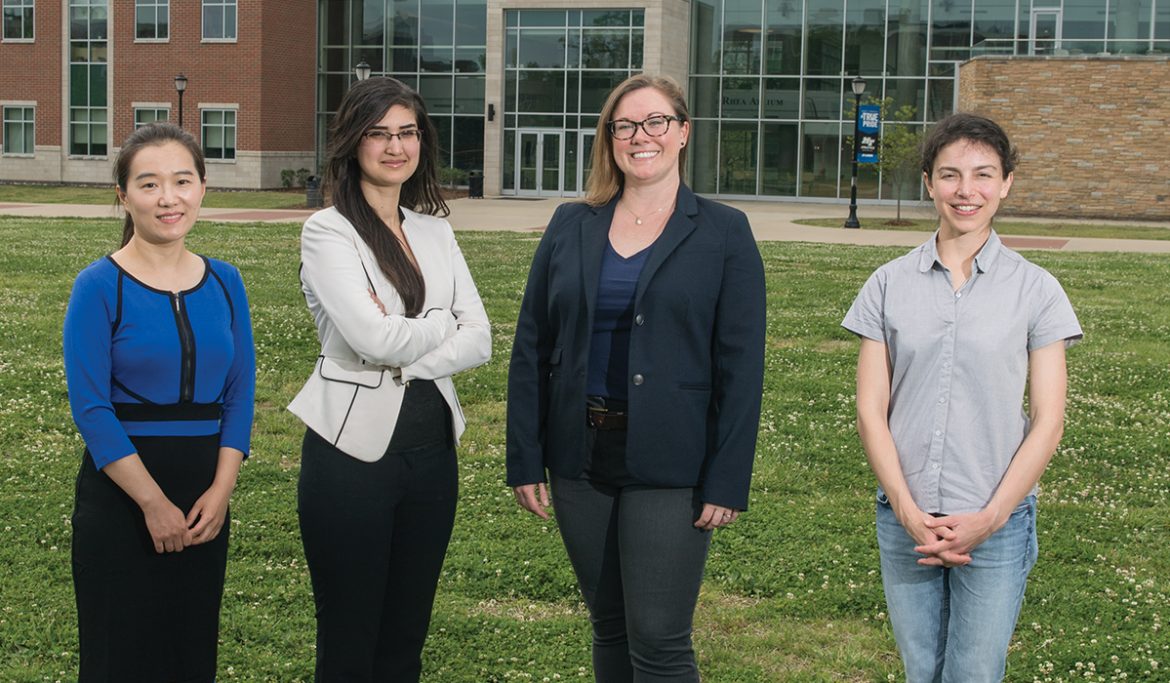
COMMENTS ARE OFF THIS POST